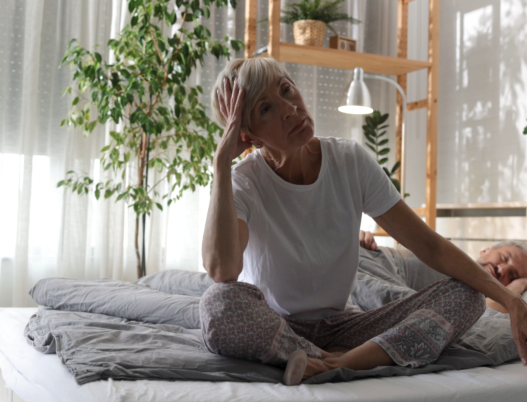[ OAB ]
Overweight and obesity increase women’s OAB risk more than threefold
By Lucy Piper, medwireNews Reporter

Introduction
Women with overweight or obesity are significantly more likely to develop symptoms of overactive bladder (OAB) than their healthy weight peers, say researchers.
Impact of BMI on OAB symptoms
“As BMI increases, the symptomatology, perceived discomfort, and QoL [quality of life] of patients with OAB worsen,” comment Baydaa Alsannan (Kuwait University) and associates in the European Journal of Obstetrics & Gynecology and Reproductive Biology.
Study Findings on Dry and Wet OAB
They found that dry OAB – in the absence of urgency urinary incontinence – was significantly increased 1.7-fold in women with overweight (BMI 25–29.9 kg/m2) compared with women with a healthy BMI. OAB with accompanying urgency urinary incontinence – wet OAB – was significantly increased 3.1 and 5.3 times in women with overweight or obesity (≥30 kg/m2), respectively.
Study Demographics and OAB Prevalence
A total of 1351 women aged at least 19 years participated in the study, 92.8% of whom had some symptoms of OAB based on the International Consultation on Incontinence Questionnaire–OAB module (ICIQ-OAB). Among the 1263 women with OAB, 54.1% had wet OAB and 38.7% had dry OAB. The remaining 7.2% are the women without any OAB symptoms. The mean ages of these women were 44.6 years and 33.8 years, respectively, and their mean BMI was 29.3 kg/m2 and 25.5 kg/m2. This compared with a mean age of 34.2 years and a mean BMI of 25.5 kg/m2 for the 97 without OAB.
BMI and Wet OAB Rates
The rates of wet OAB according to BMI were 54.0% among the 463 women with overweight and 73.9% among the 415 women with obesity. These rates were significantly higher than the 36.8% rate seen among women with a healthy BMI.
Premenopausal and Menopausal Women
The majority (62.7-90.3%) of women in the study were premenopausal, and for these participants, the risk for wet OAB was increased a significant 3.1- and 3.2-fold in women with overweight and obesity, respectively, relative to those with a healthy BMI, whereas there were no significant differences among menopausal women.
Risks for Urinary Symptoms
Compared to women with a healthy BMI, those who are overweight or obese exhibited heightened risks for frequent urination (≥9 times daily) with odds ratios (ORs) of 1.8 and 3.6, respectively, nocturia (>2 times nightly) with ORs of 1.8 and 4.0, urgency (rushing to the toilet) with ORs ranging from 1.7 to 2.8, and urine leakage with ORs of 2.2 and up to 5.0.
Impact on Quality of Life
These increased urinary symptoms among women with overweight and obesity significantly impacted their QoL, the researchers pointed out. For example, the risks for greater discomfort from increased daytime frequency, nocturia, urgency, and urine leakage were increased 3.9-, 4.8-, 4.5-, and 5.7-fold in women with obesity compared with those without.
Severity of OAB and BMI Association
Alsannan and team found that BMI was significantly associated with an increased risk for OAB of any severity, but particularly severe OAB based on an ICIQ score of 11–16 points, the risk for which was increased 5.8-fold among women with overweight and 18.6-fold among those with obesity relative to women with neither.
Read the article here: Prevalence of overactive bladder among overweight and obese women: A prospective cross-sectional cohort study - PubMed (nih.gov)
To access to the complete publication, please contact medical_information@pierre-fabre.com
Overweight and obese women are significantly more likely to develop symptoms of overactive bladder (OAB) compared to their healthy weight peers. Here are the key points of the study:
Increased OAB Risk:
- Overweight women (BMI 25-29.9 kg/m²) have a 1.7-fold increased risk of developing dry OAB (without urgency urinary incontinence).
- Overweight and obese women (BMI ≥ 30 kg/m²) have a 3.1 and 5.3 times increased risk, respectively, of developing wet OAB (with urgency urinary incontinence).
Study on 1351 Women:
- The study involved 1351 women aged 19 years and older.
- Among the 1263 women with OAB, 54.1% had wet OAB and 38.7% had dry OAB.
- The remaining 7.2% are the women without any OAB symptoms.
Impact of BMI and Age:
- Women with an average BMI of 29.3 kg/m² had wet OAB, and those with an average BMI of 25.5 kg/m² had dry OAB.
- The rates of wet OAB were 54.0% among overweight women and 73.9% among obese women, compared to 36.8% among women with a healthy BMI.
Prevalence in Premenopausal Women:
- Premenopausal women had a 3.1 to 3.2 times higher risk of wet OAB if they were overweight or obese.
- No significant risk was observed in menopausal women.
Urinary Symptoms and Quality of Life:
- Overweight and obese women have increased risks for frequent urination (≥9 times daily), nocturia (>2 times nightly), urgency (rushing to the toilet), and urine leakage.
- These symptoms significantly impact their quality of life, with increased risks of discomfort and inconvenience.
Authors' Recommendations:
- Healthcare practitioners should inform women, especially young, non-menopausal women, about the risks of obesity and overweight concerning OAB.
- They suggest low-calorie diet plans and exercise programs to achieve a healthy weight and prevent the progression from overweight to obesity, along with psychological support if needed.
In summary, the study highlights the importance of maintaining a healthy weight to reduce the risk of overactive bladder symptoms and improve the quality of life for women.
Read the article here: Prevalence of overactive bladder among overweight and obese women: A prospective cross-sectional cohort study - PubMed (nih.gov)
To access to the complete publication, please contact medical_information@pierre-fabre.com

